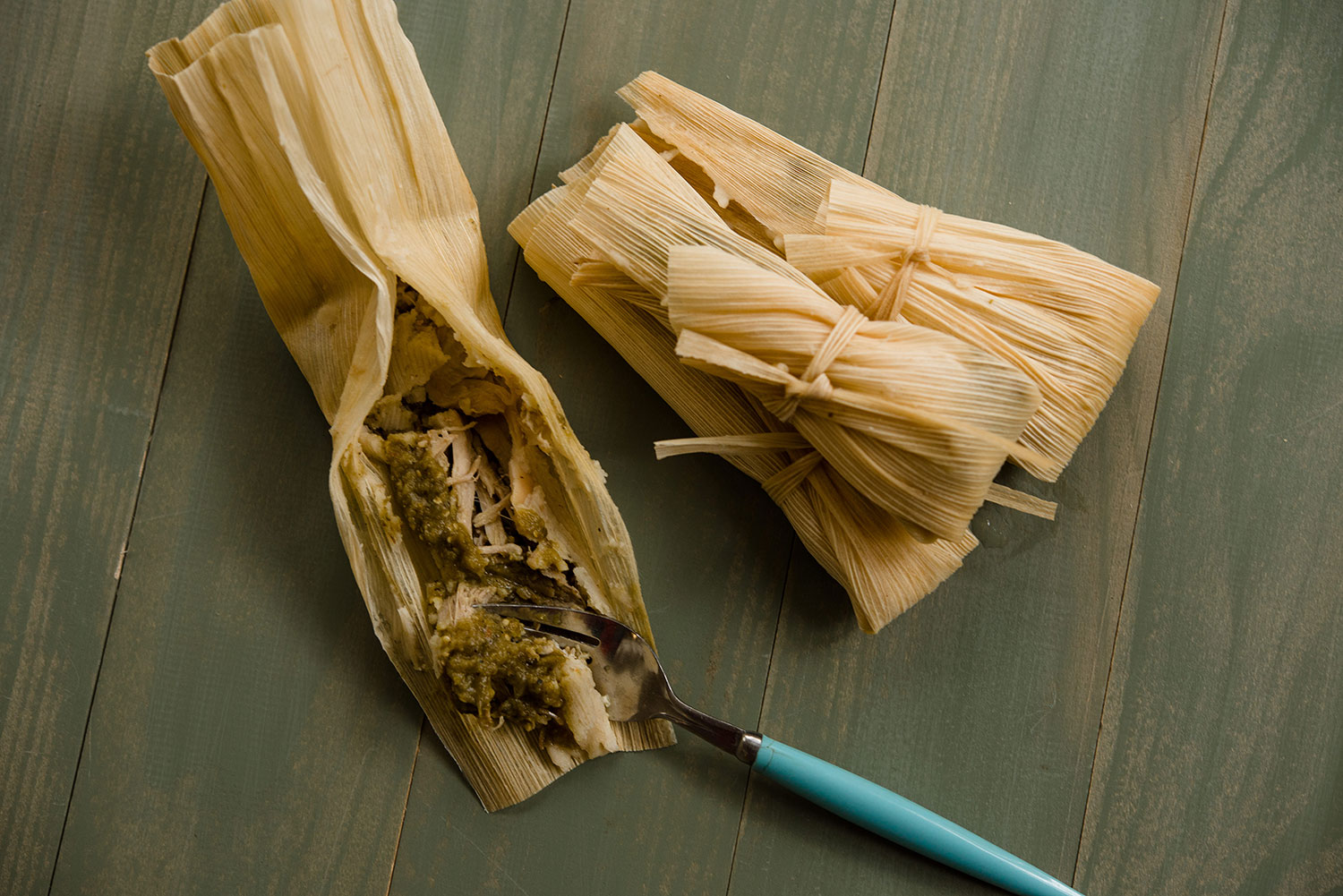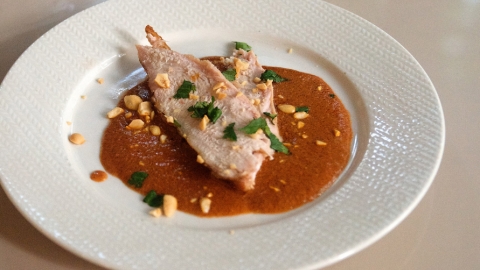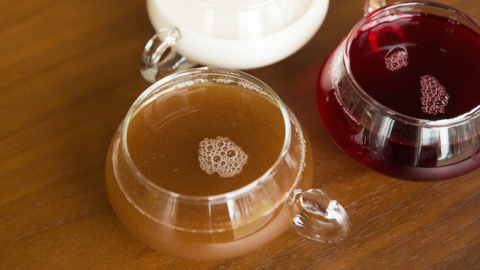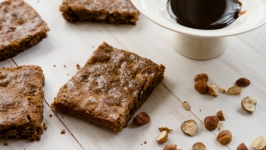La tamalada! Warm up the house with traditional Mexican tamales
In Mexico, tamales traditionally are made all winter and especially for Las Posadas, a weeklong festival leading up to Christmas. Tamales, bundles of cornmeal dough flavored with meat, vegetables, fruit or cheese, then wrapped in corn husks and steamed, warm up the house and feed everyone easily when family gets together.
Making tamales is a tradition passed down through the generations. In my family, when it is time to prepare tamales, you gather all of your aunts, your cousins, your neighbors and any kids who want to help. Every member of the family can find a meaningful way to contribute. With so many people in the kitchen, it is no surprise that you end up making a mountain of tamales. Each tamalada (a tamal party) renders about 300 tamales when my family makes them.
As a child, I remember feeling important when I helped make this delicious food. When I was 3 and 4 years old, I got to separate the dried corn husks and soak them in warm water to make them soft. Then at 5 I graduated to shredding meat and peeling chiles poblanos. As the years went by, I was trusted with toasting the chiles to make the salsa.
I remember watching my mother so carefully to learn how to read the color of the chiles as they toasted. Too light and they don’t release their flavor; too dark and they burn and would make the salsa bitter.
The most important and most skilled job is kneading the masa. Oh my, how many times I was told, “Don’t squish the masa!” “Be careful—you are smashing the masa! The tamales are going to come out hard as a rock!” You will note that I have included this same message several times in the recipe. I wanted to keep the experience authentic for you.
Have fun making these with your family, and remember: Do not squish the masa!
Tamales
Serves 4-6, Makes 15-25
Masa
2 cups masa-style cornmeal
1 teaspoon baking powder
1/2 teaspoon salt
2/3 cup lard or oil
2 cups broth or water
Sift together the dry ingredients. Mix the lard into the dry ingredients with your hands or a spatula while slowly adding broth or water. Once combined, knead the dough with your hands without squishing the dough. The objective is to bring air into the dough and make it fluffy. Do not squish. Do Not Squish. DO NOT SQUISH! You can opt to use an electric stand mixer set to a slow speed, but be careful not to overwork the masa.
The true test for a good dough is to check if it floats in a cup of water. It may take you many tries before achieving this, so don’t fret!
Choose which type of tamales you want to make and follow the recipes below.
- Pork and Salsa Verde
- Chicken and Salsa Verde
- Beef and Chile Rojo
- Roasted Poblano Peppers, Queso Fresco and Salsa Verde
Filling Options:
Pork, Beef or Chicken
1 small beef or pork roast or 2 pounds boneless skinless chicken thighs
1/2 small onion
2 cloves garlic
1 bay leaf
Salt and pepper, to taste
Place roast or chicken in a pot (a Dutch oven works great) with onion, garlic and spices. Cook at 325° until tender: Roasts require 2–3 hours cooking time, chicken requires about 45 minutes. Another option is to cook meat overnight in a Crock-Pot. Once meat is cooked, shred and set aside.
Roasted Poblano Peppers & Queso Fresco
6–8 poblano peppers
8–10 ounces queso fresco
Roast peppers on the open flame of a gas stove or on the top rack of an oven with the broiler on high. Place in a reflective container and cover or place in a paper bag and close with a clip. Allow the peppers to steam for 10–20 minutes. Peel the thin skin off of each pepper, remove stem and seeds, and discard. Slice the peppers into thin strips and set aside. Reserve queso fresco until it is time to assemble the tamales.
Salsa Options:
Salsa Verde
1 pound tomatillos, husks removed and washed
1/2 small onion
2–3 jalapeños or serrano peppers
Vegetable oil for frying
Sprig of cilantro
Salt
Pan sear or roast all ingredients except cilantro and salt in a hot oiled frying pan or oiled baking sheet. You may have to do this in batches. Once all vegetables are cooked, add cilantro and salt to taste, then blend together into salsa consistency.
Chile Rojo
Water
Vegetable oil for frying
1 small package (2 ounces) guajillo chile
2–3 puya chiles
2–3 chiles de arbol
1/4 small onion
6–8 cloves of garlic
1/2 pound tomatillos, husks removed and washed
1/2 cup broth or water
1/4 teaspoon each cumin, oregano, thyme
Salt
In a tall and narrow pot (8- to 12-quart stockpot or soup pot), boil the water, then lower the heat and let it simmer. In a large pan, fry chiles 1 or 2 at a time in the oil until they turn bright red, but not black. As you remove chiles from the pan, place them into the hot water to soften. Fry the onion and garlic until golden; set aside. Add the tomatillos into the simmering water with the chiles for 20 minutes. Rotate chiles and tomatillos to fully rehydrate. Once all are soft, drain the water, remove the stems and blend with the garlic, onion and spices. Salt to taste.
Assemble
1 package corn husks
Prepared masa
Choice of filling
Choice of salsa
Allow the corn husks to soak in water for at least 20 minutes so they soften and become pliable. To make ties to hold the finished tamales together, find longer thinner husks and tear off strips and set aside. Place a husk on your work surface and spread some masa on the husk near the top. Place a piece of plastic wrap on the masa and gently spread the dough with your fingers across the top of the husk. Peel off the plastic wrap. Place the fillings you are using in the center of the masa. Do not overfill. Fold the husk over to cover the masa and filling, then flip the bottom part of the husk onto the side with the seam, and finish it off with a tie. Do this until all of the masa is gone. To cook, place all of the tamales in a steamer in an upright position, making sure not to squish them. If you don’t have a steamer, place a rack and stainless-steel bowl in the bottom of a tall cooking pot, place the tamales in the bowl in an upright position and cover the pot. Cook for 1 hour and 15 minutes. Check the tamales for doneness. The masa should hold together and easily pull away from the corn husk. If necessary cook another 15 minutes. Do not overcook! They may seem a little too moist at first, but the masa will dry a bit and settle once they have been out of the steam for a while. Serve with Salsa Verde or Chile Rojo.








